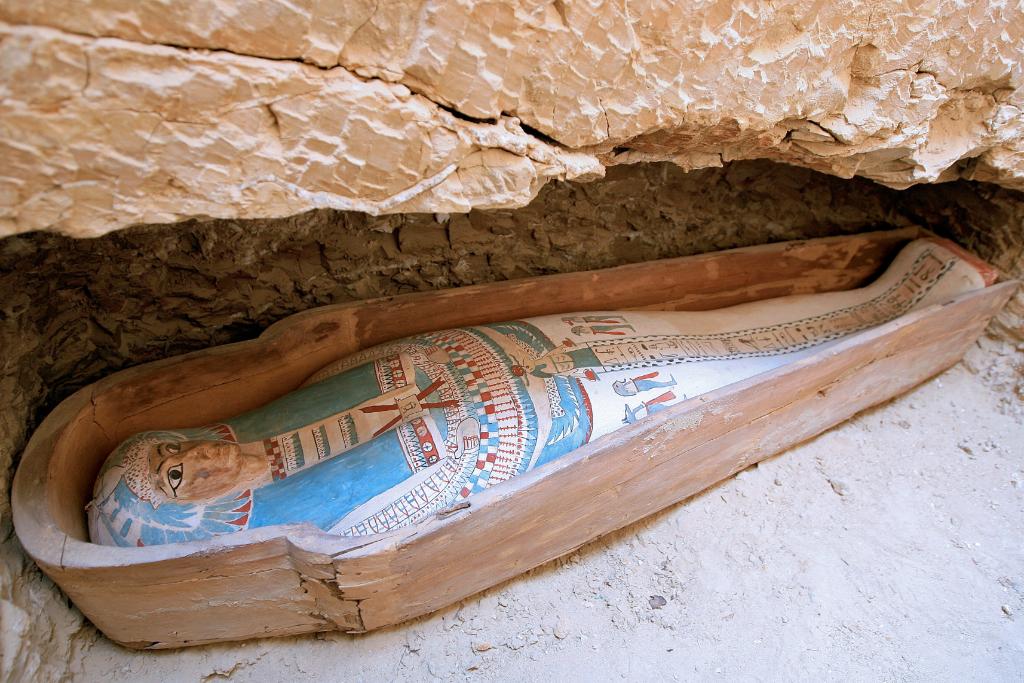3,000-year-old “Frankenstein” mummies found in Scotland
A picture taken on April 26, 2009 shows a wooden coffin containing a linen-wrapped mummy found in a necropolis southeast of the pyramid field of Lahun at the entrance of Egypt’s Fayyum oasis, some 130 km southwest of Cairo.
Researchers thought that they found two mummified corpses. But it turns out that they actually found six corpses–or maybe just parts of corpses.
With the help of new DNA experiments, scientists have found that two 3,000-year-old Scottish mummies are actually assembled out of six different dead people, National Geographic News reported. The mummies were first discovered over a decade ago. When they were first discovered 2001, they appeared to be like any other ordinary mummy: one looked like a young boy, and the other appeared to be a teenaged girl. They were both buried in the fetal position and found below an 11th-century house off the Scottish coast.
But something seemed a little off. For starters, their heads looked weird. "The jaw didn't fit into the rest of the skull," Professor Terry Brown told National Geographic.
More from GlobalPost: When the BRICs crumble
The researchers then analyzed the skeletons and found that one of the corpses had the torso and limbs of one man, the skull and neck of another, and the lower jaw of yet another person. One of the corpses was assembled between 1260 B.C. and 1440 B.C., while the other was assembled between 1130 B.C. and 1310 B.C., Live Science reported. The bodies, apparently created on purpose, are the first evidence of "deliberate mummification" that occurred outside of Egypt. Even more strange was the meticulous process used to create the Frankenstein corpses: they were first entombed in acidic surroundings so they could be preserved, and then formally buried up to 600 years after death, Live Science said.
Why would anyone take the time to build a new dead person out of old dead people? One possible explanation is that it helped the living get more land. "Merging different body parts of ancestors into a single person could represent the merging of different families and their lines of descent," Mike Parker-Pearson, an archeologist, told Live Science. "Perhaps this was a prelude to building the row of houses in which numerous different families are likely to have lived."
The story you just read is accessible and free to all because thousands of listeners and readers contribute to our nonprofit newsroom. We go deep to bring you the human-centered international reporting that you know you can trust. To do this work and to do it well, we rely on the support of our listeners. If you appreciated our coverage this year, if there was a story that made you pause or a song that moved you, would you consider making a gift to sustain our work through 2024 and beyond?
